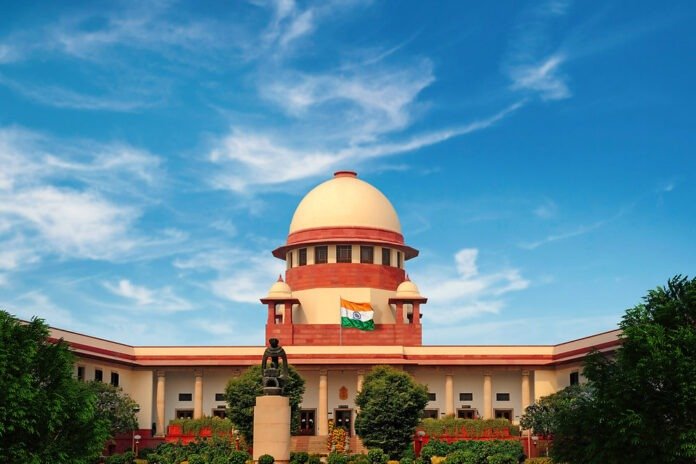Supreme Court says Union opposes evolving death‑penalty methods; considers allowing lethal injection alongside hanging. | The Legal Observer
In a PIL challenging the exclusive use of hanging, the Supreme Court lamented the government’s reluctance to consider alternate execution methods, signalling a call for reform in capital punishment protocols.
In a momentous hearing on a writ petition seeking abolition of death‑by‑hanging, the Supreme Court of India on Wednesday expressed dismay over the Union government’s resistance to a proposal of allowing lethal injection as an alternative mode of execution. The bench, comprising Justices Vikram Nath and Sandeep Mehta, lamented that the government “is not ready to evolve” in step with changing norms of humanity and justice.
The petition, filed in the nature of a Public Interest Litigation (PIL), urged the Court to recognize that the archaic method of hanging inflicts unnecessary suffering. The petitioner argued that condemned prisoners should be given the option to choose between hanging or lethal injection — a method seen in many jurisdictions as more humane. However, the Centre’s counter-affidavit advanced that providing such choice may not be “feasible,” citing logistical, procedural and possibly legal complications.
Court Pushes Back: A Call for Evolution
At the outset of arguments, the Court questioned whether the government’s refusal was rooted in mere inertia or deeper systemic constraints. Justice Mehta observed that if the State is unwilling even to permit a choice, it suggests an institutional unpreparedness to adapt modern standards. The Court pressed the Union to explain why evolution in execution protocols is being stymied.
The bench further asked whether the government has considered alternatives globally, and if so, whether India is yet ready to adopt them. The Court’s tone indicated that mere legislative inertia or tradition cannot justify resistance to reform — especially when constitutional values of dignity and liberty are in play.
The Centre’s Stand: “Not Feasible” and “Unworkable”
The government’s stance against introducing lethal injection as an option is not new. In earlier litigations, the Centre has resisted alternatives to hanging, describing lethal injection as “unworkable” and fraught with risks of failure or misapplication. The Indian Express+2www.ndtv.com+2 Past submissions have pointed to practical challenges — availability of necessary drugs, expertise, risk of botched executions, and ethical objections from medical professionals.
The Centre has also defended hanging as simple, time-tested, and procedurally safe compared to more technically demanding alternatives. In its contention, lethal injection, though purportedly humane, has been criticized in other jurisdictions for prolonged suffering or complications. The Indian Express+1
International & Legal Context: Trends, Reports, and Critiques
The debate over mode of execution is not confined to academic discourse. The Law Commission of India, in its 187th Report, observed a growing global trend away from hanging toward methods such as lethal injection, electrocution, or shooting, in an effort to reduce suffering during capital punishment. The Indian Express+1
Internationally, courts have wrestled with whether states must guarantee not just the right to life, but the right to a dignified death. In U.S. jurisprudence, for instance, the case Baze v. Rees upheld a state’s lethal injection protocol under constitutional scrutiny — albeit amid strong dissent and rigorous debate on humane standards. Wikipedia The Indian petition seeks to chart its own path consistent with constitutional mandates under Article 21 (protection of life and personal liberty).
The Court’s Moving Tone: Reform or Stagnation?
While the Court has, in previous cases, held that a convict “should die in peace, not in pain,” it has also exercised restraint in ordering a specific mode of execution, suggesting that legislative reform should ideally come from Parliament. The Times of India+1 In this latest hearing, however, the bench’s admonishment of the Union signals a more proactive judiciary, at least in tone, pushing for a re-examination of entrenched positions.
The Court may now insist on concrete data, perhaps from nations that have successfully adopted lethal injection, or direct the formation of an expert committee to study feasibility, risks, costs, and protocols — bridging the gap between aspiration and practicability.
What Might Happen Next
- Affidavit by Centre: The government will likely respond with a detailed affidavit laying out obstacles, budgets, technical requirements, and any pilot projects in consideration.
- Formation of Expert Committee: The Court may direct an independent committee comprising medical experts, forensic scientists, legal scholars, and human rights specialists to evaluate different methods, their risks, and best practices.
- Legislative Dialogue: If the Court leans toward recommending change, Parliament and the Home Ministry may be urged to amend Section 354(5) of the Criminal Procedure Code, which currently mandates hanging as the mode of execution.
- Interim Safeguards: Pending final decision, the Court might issue interim instructions to ensure that the method of hanging, as currently administered, adheres to maximum safeguards to minimize suffering.
Challenges and Ethical Crossroads
Any move towards lethal injection raises complex practical and moral issues:
- Medical Ethics: Many medical professionals resist participating in executions, citing the Hippocratic Oath and professional conduct.
- Reliability and Technical Failures: There have been international instances where lethal injection protocols failed, causing prolonged suffering. The Indian Express
- Drug Procurement & Regulation: The procurement of drugs, their storage, handling, and quality control are fraught with regulatory and legal hurdles.
- Judicial Overreach vs Legislative Domain: Critics may argue that courts should not dictate execution methods — a matter falling under legislative and executive domain.
The Supreme Court’s stern critique of the government’s reluctance is more than rhetorical flourish — it reiterates that constitutional values evolve, and that justice must keep pace with morality, science, and the global discourse on human dignity. If the judiciary presses forward, the coming weeks may witness a pivotal shift in how India contemplates the gravest of penalties.
For further commentary and legal insights, visit our Views — Insight section and stay updated under our National News coverage.
Catch video analyses and expert interviews on our YouTube channel: The Legal Observer.





